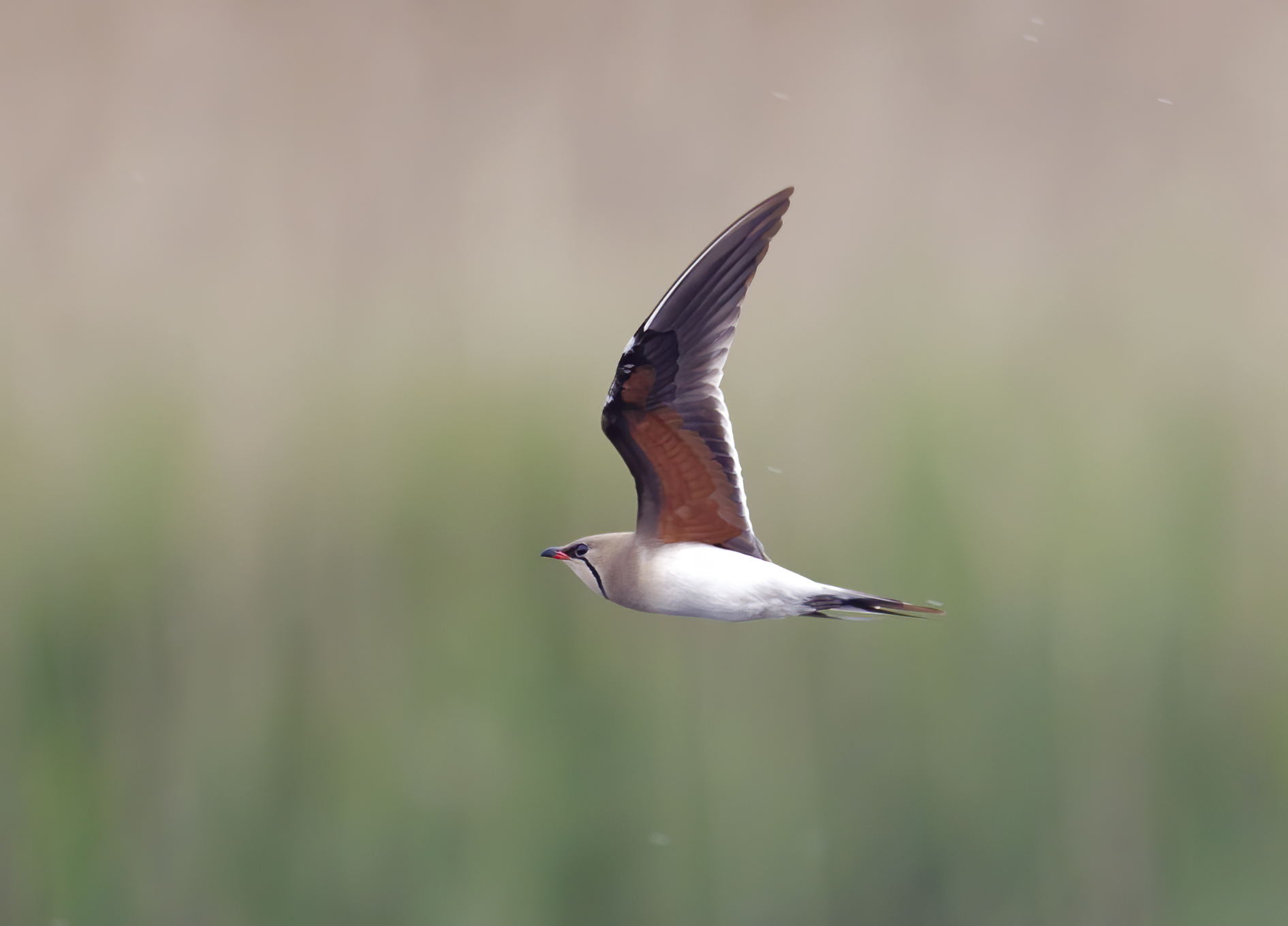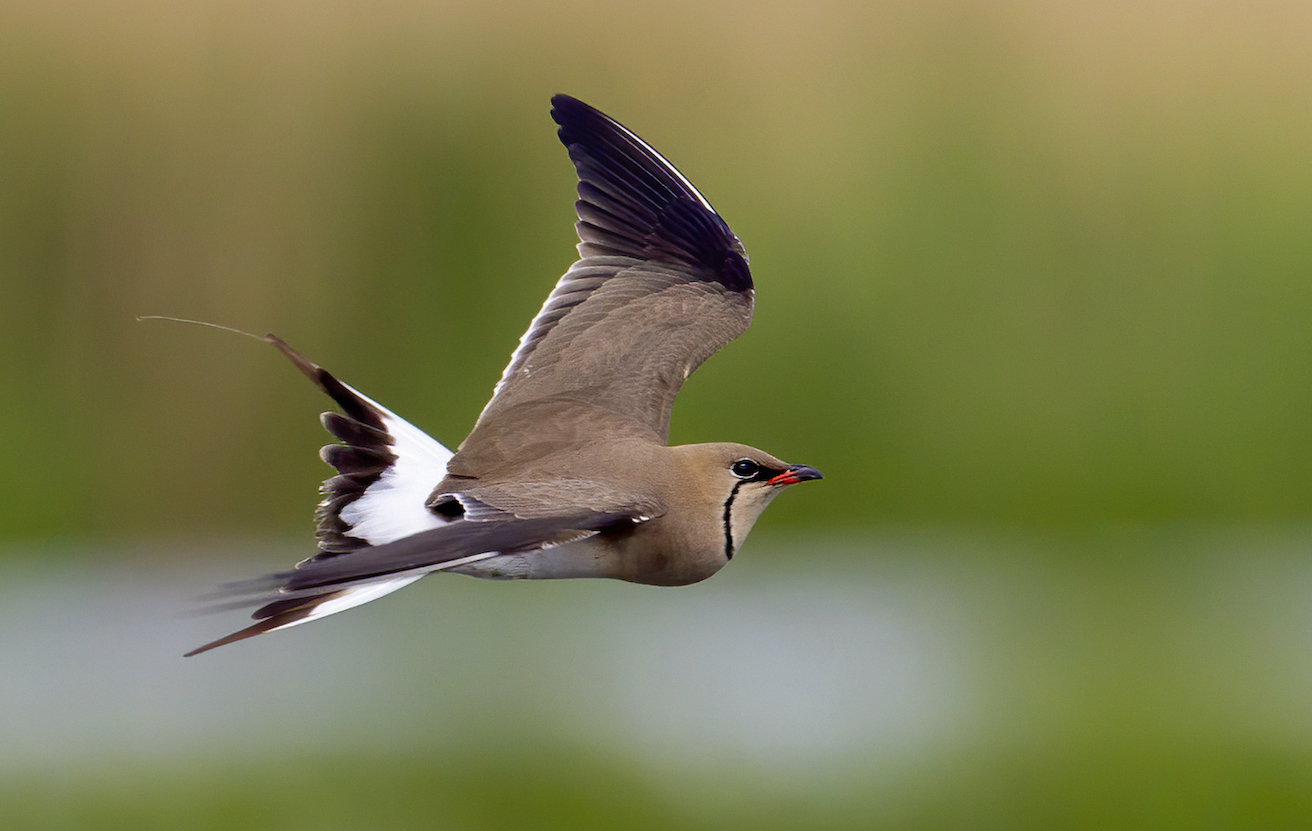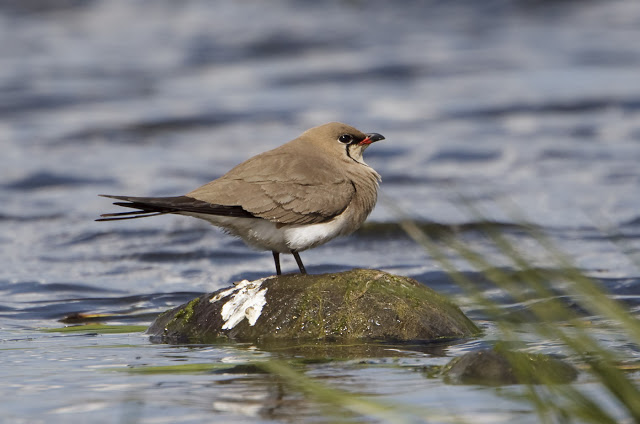Collared Pratincole Glareola pratincola



What was thought to have been the first county record was of a bird shot at Branston Hall near Lincoln in 1827. The description published by Yarrell (1845) was as follows:
‘From Mr. F. Holme I learned that a Pratincole was shot by Frederick Oats, Esq., of Branston Hall, near Lincoln on the 15th August 1827, whilst flying about much like a Swallow and near the ground.’
However, in a detailed analysis of historic records of this species and of its congeners, Black-winged and Oriental Pratincoles, published in British BIrds in 2024 (McInerney et al, 2024) concluded that this bird should be demoted to 'Pratincole sp.' as there were no plumage details at all. There is also no museum specimen available that we know of. In addition, Naylor, in his archive of Historical Rare Birds (BBRC website) noted that everything else recorded by Holme is now rejected, so this record is considered 'not proven'.
Thus the first county record becomes that seen at Gibraltar Point NNR, May 21st 1973, 146 years later, Three further records between 1981-2011 with none since, confirms its status as a vagrant in the county. The bird at Frampton Marsh in 2009 proved to be quite elusive disappearing off south-eastwards on its first day. It reappeared for three hours the next day, hawking insects over the scrapes and reed beds before flying off to the north. It was noted to be missing some primaries in its left wing. The 2011 bird was found during a breeding bird survey at Killingholme Marshes. It frequented pools just inland of there amidst the industrial installations of the Humber bank oil industry. It was the only British record that year.
With 79 British records between 1950-2020, the species remains a rarity averaging about one record a year.
| Site | First date | Last date | Count | Notes |
| Gibraltar Point | 21/05/1973 | - | 1 | |
| Donna Nook | 11/07/1981 | - | 1 | |
| Frampton Marsh | 08/08/2009 | 09/08/2009 | 1 | |
| Rosper Rd pools, Killingholme | 27/04/2011 | 07/07/2011 | 1 |
There are two accepted records of unidentified Pratincoles, either Collared or Black-winged: one shot at Branston Hall, Lincoln, August 15th, 1827 and another on August 11th 1980 flying east at Barrow Haven.
Finder’s report: Collared Pratincole, Gibraltar Point NNR, May 21st, 1973 - first county record.
by R. B. Wilkinson
Note: account based on the original BBRC submission, this was the second county record. The BBRC report for 1973 stated that after a year with no pratincoles at all, the Collared made a spirited return, with five overshooting in spring and one or two vagrants in August; there were six certain identifications of this species (one Pratincole sp.) taking the total since 1958 to 13 and the all-time total to not more than 44. There has been at least twelve Black-winged Pratincoles (seven since 1958).
Circumstances
The bird was first sighted flying over the Mere by Keith Payne (KP) at approximately 10.10hr; he fetched RBW and Frances Evans (FE) and it was watched from the hide until it flew off seawards at 11.00hr. It was seen briefly down to 20 yd. but mainly between 60-130 yd. Optics used were binoculars (9 x 35, 7 x 50, and 9 x 35) and a 40x telescope. Light conditions were good with slight haze and easterly F3. Cloud cover was 5/8.
Flight was fast and low over water, continually swerving from side to side, recalling a small skua, but contrasting darker underwings with white belly as the bird twisted and turned in the air plus its forked tail made it readily identifiable as a Pratincole. It flew up and down low over the water at the far end of the Mere, climbing slightly when it banked to turn. It landed three times on fairly bare ground at a distance of c. 230 yd. from observers. On the ground it was almost impossible to see even through binoculars, merging almost completely with the colour of the soil. It stayed on the ground for quite long periods, sometimes preening, occasionally showing flashes of white as it did so.
Description
Upperparts – in flight the slender curved wings were clearly two shades of brown with the darker colour on the primaries. The rump and tail were white right up to the base of the wings where the white area ended abruptly. The tail was forked quite deeply and had a black terminal band. Head and body brown.
Underparts – RBW had several brief views of the underside of the wings as the bird twisted in the air and they appeared to be uniform brown. At certain angles it was possible to see a darker area on the axillaries. The brown underwings contrasted with the white belly. KP noted that the legs were dark.
On the ground – at a distance of 230 yd. it was difficult to make out much detail even with the 40x telescope, it looked a very scruffy bird. However, the following was noted by RBW:
Bill was short and dark (confirmed by KP when the bird was flying); crown appeared slightly darker brown than nape as bird leaned forward to preen its breast feathers, but this may have been due to the angle of light on the feathers. A darker patch was noted running from the base of the bill through the eye. With the bird facing the observer the belly looked white, breast and throat pale buffish brown. It was just possible to detect a dark line extending down either side of the throat but at that distance there appeared to be no dark line across the throat defining a gorget. FE commented that she could see no throat markings at all when the bird was in the air.
In conclusion, the bird was undoubtedly a pratincole, probably a 2CY Glareola pratincola.
Reference
Christopher J. McInerny, Robert Y. McGowan, Robin M. Sellers, Martina Cafiso, and J. Martin Collinson (2024). A review of early historical records of Collared Pratincoles in Britain, and new British first records of Collared, Black-winged and Oriental Pratincoles. British Birds 117: 152-167.
Naylor, K. https://www.historicalrarebirds.info.
Smith, F. R., and the Rarities Committee (1974). Report on rare birds in Great Britain in 1973 (with additions for ten previous years). British Birds 67 (8): 310-348.
Yarrell, W. 1845. A History of British Birds. Volume II. 2nd edn. John Van Voorst, London.
(Account as per new Birds of Lincolnshire (2021), included September 2022)

